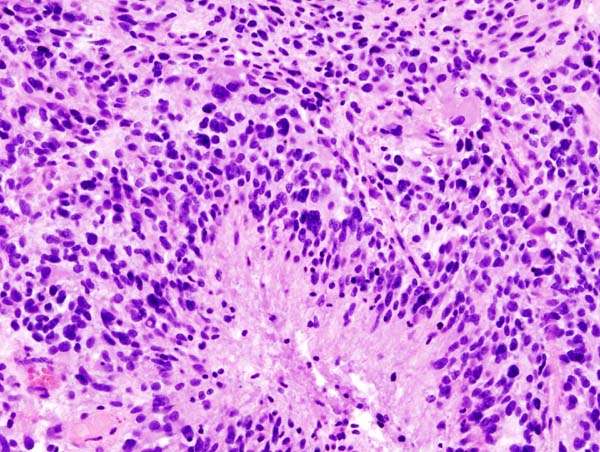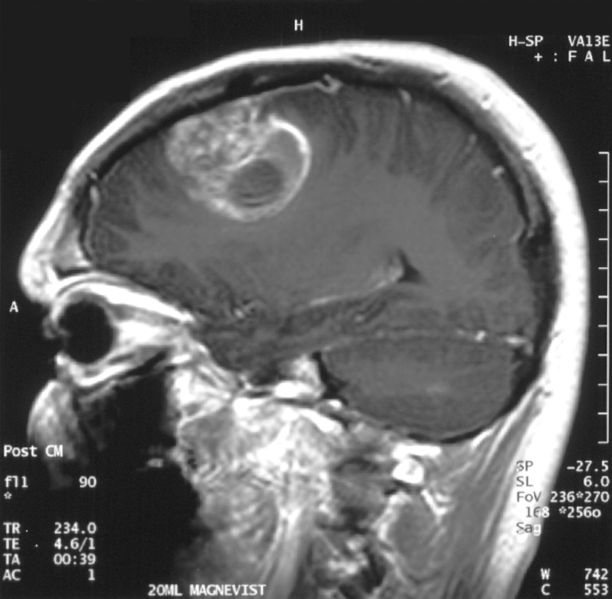Glioblastoma multiforme overview: Difference between revisions
Varun Kumar (talk | contribs) (Created page with "{{Glioblastoma multiforme}} {{CMG}} ==Overview== '''Glioblastoma multiforme''' (GBM), also known as grade 4 astrocytoma, is the most common and agg...") |
Varun Kumar (talk | contribs) mNo edit summary |
||
| Line 21: | Line 21: | ||
[[Category:Neurology]] | [[Category:Neurology]] | ||
[[Category:Types of cancer]] | [[Category:Types of cancer]] | ||
[[Category:Oncology | [[Category:Oncology]] | ||
{{WikiDoc Help Menu}} | {{WikiDoc Help Menu}} | ||
{{WikiDoc Sources}} | {{WikiDoc Sources}} | ||
Revision as of 17:21, 18 January 2012
|
Glioblastoma multiforme Microchapters |
|
Diagnosis |
|---|
|
Treatment |
|
Case Studies |
|
Glioblastoma multiforme overview On the Web |
|
American Roentgen Ray Society Images of Glioblastoma multiforme overview |
|
Risk calculators and risk factors for Glioblastoma multiforme overview |
Editor-In-Chief: C. Michael Gibson, M.S., M.D. [1]
Overview
Glioblastoma multiforme (GBM), also known as grade 4 astrocytoma, is the most common and aggressive type of primary brain tumor, accounting for 52% of all primary brain tumor cases and 20% of all intracranial tumors. Despite being the most prevalent form of primary brain tumor, GBMs occur in only 2-3 cases per 100,000 people in Europe and North America.
Treatment can involve chemotherapy, radiotherapy, and surgery, all of which are acknowledged as palliative measures, meaning that they do not provide a cure. The five-year survival rate of the disease has remained unchanged over the past 30 years and stands at less than three percent. Even with complete surgical resection of the tumor, combined with the best available treatment, the survival rate for GBM remains very low.
-
Glioblastoma (histology slide)
-
Image 1b. Sagittal MRI with contrast of a glioblastoma WHO grade IV in a 15-year-old boy
References

